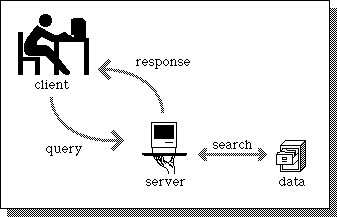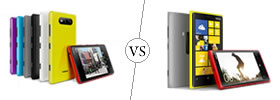Difference between Client and Server
Key Difference: A Client is a computer program that sends request to another program to perform its actions. Server is the receiving and responding program that processes the requests of the client program and enables the client to execute its actions.
 A server operates as a system that works in a computer network and responds to requests send from another program, thereby providing a network servicing. Most often servers operate and run on a particular dedicated computer which is accordingly termed as ‘the server’ in respect to the network it handles. A single central server can control and operate multiple clients at a time.
A server operates as a system that works in a computer network and responds to requests send from another program, thereby providing a network servicing. Most often servers operate and run on a particular dedicated computer which is accordingly termed as ‘the server’ in respect to the network it handles. A single central server can control and operate multiple clients at a time. A server is essentially a part of a network system which is known as client-server architecture. Within this model the client serves the role of an initiator while the server effectively serves to process the requests send by the client. The computers connected within a network are also able of hosting servers. Again a computer may also run several servers and connect to the required one accordingly. A server is typically a socket listener that can serve numerous users at a time. This client-server architecture operates to serve public users through internet or private users dedicated to some specific organization or network. The common operating servers in various networks are web server, file server, mail server, database server and range of other server.
A variety of computing operations undergo the usage of a server. The server works as the central controller of data from where the co-ordinations network machines or workstations access the data and this kind of server is thereby termed as application server. This effectively serves the purpose of data streamlining.
Internet in the similar way is a stack of server where a single request for a web page is processed through a channel of protocols which are satisfied by a number of servers. This may involve modem, routers, domain name server and multiple other servers to process a singular web page request.
 While any computer is capable of performing the role of network server, it might not essentially provide effective features of a dedicated server. A dedicated server is designed after a high end featured prototype capable of providing superior high performance. These dedicated servers are enabled with mass storage capacity, high performance enabled RAM and high speed CPU, fault tolerance and other specific features.
While any computer is capable of performing the role of network server, it might not essentially provide effective features of a dedicated server. A dedicated server is designed after a high end featured prototype capable of providing superior high performance. These dedicated servers are enabled with mass storage capacity, high performance enabled RAM and high speed CPU, fault tolerance and other specific features.A client is also a computer program which sends requests to its resource end that is a server and accepts the processed request to perform its operations. However, the client program and the server program can effectively run on the same computer and in such cases the client connects with the server through inter-process communication. Clients are the initiators of such connections where servers wait for potential clients to connect. Previously the term was denoted to devices that would act as dumb terminals and depend on remote computers connected through a network to perform their programs.
Client devices can be classified as fat clients, thin clients and hybrid clients. A fat client or thick client is less dependent on server for they can perform their data processing operations without essential dependency over a server. Personal computer or a CAD running computer is paradigms or fat clients. A thin client is a device that uses web application to perform its operations. It approaches an application server to work its operation. Hybrid client is the combination of these two types of clients.
Image Courtesy: dharmestha.blogspot.com, infomotions.com









Add new comment